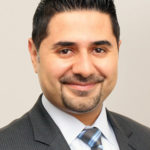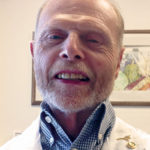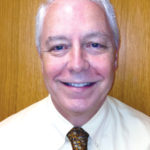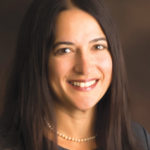A pair of sessions on Monday will offer attendees an update on new and evolving technologies that have the potential to help rheumatology health professionals manage and treat rheumatic disease and improve patient access to rheumatologic care.
From 1:00 – 2:00 pm in Room 32 B, the ACR symposium, Tech Tools for Rheumatology, Version 3.0, will explore novel technologies that can be implemented in the office or at the bedside to help improve the care of patients with rheumatic illnesses.

“In the past, it could be a struggle, particularly for office-based rheumatologists, to incorporate new technologies into their clinical practice,” said symposium speaker Suleman Bhana, MD, of Crystal Run Healthcare in Middletown, NY. “Today, though, that portable supercomputer in our pocket — our smartphone — can help us better care for and manage our patients.”
Among the tools Dr. Bhana will discuss include relatively low-cost attachments that will enable rheumatologists to use their smartphone camera to capture macro high-definition images or conduct thermal imaging with high-definition video that can be imported directly into the electronic health record.
“The traditional paradigms for medical technology are high costs and slow utilization,” Dr. Bhana said. “With our smartphones, however, we don’t have to follow that same paradigm. There are things we can do now in a much lower cost fashion and with an increased speed of utilization that will allow us to help our patients in a more efficient manner.”
Also on Monday afternoon, the ARHP session Telehealth: Can It Expand the Rheumatology Workforce? will focus on the use of telehealth technologies as a way to bring rheumatologic care to patients who do not have convenient access to specialty care. The session will be held from 2:30 – 4:00 pm in Room 11 B.

Daniel Albert, MD, of the Dartmouth Institute for Health Policy and Clinical Practice in Lebanon, NH, will discuss administrative concerns in the establishment of a telemedicine site.
“Right now, most of the telerheumatology sites are in hospitals, but they don’t need to be,” Dr. Albert said. “They could be in clinics or even be extended to VNAs and nursing homes. The challenge in setting up a site is not the technology, which is readily available and becoming less expensive; the primary challenges are administrative.”
He said issues related to accreditation, credentialing, and licensure, for example, can vary from state to state, and all need to be aligned in a very explicit way in order to establish a relationship with a hospital or other institution as a telerheumatology site.
“With the predicted rheumatologist shortage in the coming years, it’s going to be a service that is increasingly sought after,” Dr. Albert said. “Although it’s a bit of a maze to establish a telemedicine site right now, it’s going to become smoother in the future, but you have to engage your administrators because they are going to have to put a lot of time and effort into it.”

Daniel F. Battafarano, DO, of San Antonio Military Medical Center and Co-Chair of the 2015 ACR/ARHP Workforce Study, will further discuss the role of telehealth in light of impending rheumatology workforce shortages. He will also talk about the longtime use of telemedicine in the military and lessons learned that may be valuable in clinical practice.
“Over the course of the next ten years or so, as more doctors from the baby boomer generation retire, we’re going to be facing a national dilemma in which the population is growing while up to 50 percent of the physician workforce is retiring,” Dr. Battafarano said. “Telemedicine will have to play a role in healthcare to help bridge that gap, particularly in reaching populations and areas of the country that are already underserved.”
While there are successful examples of telemedicine ongoing in the U.S., mainly in medical centers that have relationships with outlying clinics or other providers, Dr. Battafarano said the potential role of telemedicine for the average rheumatologist in private practice is less clear.
“Moving forward, telemedicine is probably going to be primarily defined by needs in the most rural areas of the U.S. and the more populated areas will assimilate it as is necessary,” he said.

Elizabeth Ferucci, MD, MPH, of the Alaska Native Tribal Health Consortium in Anchorage, AK, will talk about her and her colleagues’ experience operating a telerheumatology site in Alaska.
“Currently, the benefits of telemedicine are most likely to be realized in populations where travel is more expensive or inconvenient, such as the population here in Alaska,” Dr. Ferucci said. “There are some limitations to telerheumatology, however. For example, the ability to perform a joint exam or other physical examination is limited, so where we most often use it is with patients who need close follow-up that does not absolutely depend on a face-to-face physical exam and who have barriers to travel for an in-person visit.”
Despite the fact that telerheumatology is becoming more widely used, Dr. Ferucci said, more research is needed to thoroughly evaluate its effectiveness in the diagnosis and management of rheumatic diseases.
